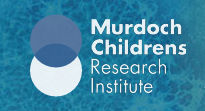预约演示
更新于:2025-05-07
Lymphangioma
淋巴管瘤
更新于:2025-05-07
基本信息
别名 Acquired Progressive Lymphangioma、Acquired progressive lymphangioma、Acquired progressive lymphangioma (disorder) + [35] |
简介 A benign tumor resulting from a congenital malformation of the lymphatic system. Lymphangioendothelioma is a type of lymphangioma in which endothelial cells are the dominant component. |
关联
4
项与 淋巴管瘤 相关的药物靶点 |
作用机制 mTOR抑制剂 |
原研机构 |
最高研发阶段批准上市 |
首次获批国家/地区 美国 |
首次获批日期1999-09-15 |
靶点 |
作用机制 TLR激动剂 [+1] |
非在研适应症- |
最高研发阶段批准上市 |
首次获批国家/地区 韩国 |
首次获批日期1995-01-03 |
靶点 |
作用机制 TLR4激动剂 |
非在研适应症 |
最高研发阶段临床2期 |
首次获批国家/地区- |
首次获批日期1800-01-20 |
24
项与 淋巴管瘤 相关的临床试验DRKS00035670
Performance, safety and clinical benefits of a pre-calibrated navigated suction device
开始日期2024-12-04 |
申办/合作机构- |
NCT05983159
A Modular Open Label, Signal Seeking, Phase II Trial of Targeted Therapies for Patients With Slow-Flow or Fast-Flow Vascular Malformations (TARGET-VM)
Recent studies have demonstrated that growth of vascular malformations can be driven by genetic variants in one of 2 signalling pathways. Targeted drugs specific to these pathways have been developed and shown to be effective in treating cancer. This study will describe the effectiveness of (i) 48 weeks of alpelisib therapy for participants with slow-flow vascular malformations and a gene mutation in one of these signalling pathways (module 1) and (ii) 48 weeks of mirdametinib therapy for participants with fast-flow vascular malformations and a gene mutations in the other signalling pathway (module 2).
开始日期2024-09-13 |
申办/合作机构 |
NCT06892964
Prospective and Retrospective Clinical Study of Lymphatic Malformations: Institution of an Italian REGistry of Lymphatic Malformations and of a Biobank for Biological Sample Collection
Lymphatic malformations (ML), are benign non-neoplastic, rare, resulting from an embryologic abnormal development of the lymphatic system. Sometimes they may be associated with other vascular malformations (venous or arterial)1,2. ML usually appear at birth, in early childhood or during the first years of life (congenital vs. acquired) and are mainly localized in the region of the head and neck, armpits, groin, retroperitoneal tissues, tongue and mucous membranes of the oral cavity since these areas contain a plethora of lymphatic structures1. The main complications due to their location are airway obstruction, difficulty in eating, and bleeding3-5. Infection and bleeding can promote the sudden, progressive and accelerated growth of these lesions1. The location, speed of growth, and the subsequent complications associated with ML, determine the overall severity of the clinical picture and require generally the referral of the affected patient to a specialized center that can ensure a multidisciplinary care3,5. Recently, the International Society for the Study of Vascular Anomalies (ISSVA), has revised and updated the classification of such malformations, emphasizing the distinction between isolated forms and ML in the context of more complex syndromes with multisystem involvement2. Until a few years ago, the only treatment strategies available for ML were scleroembolization, cryotherapy, transcutaneous laser photocoagulation, and surgical resection of the malformation. The recent identification of genetic alterations in the phosphatidylinositol-3-kinase (PI3K)/protein kinase B (AKT)/target mammalian pathway of rapamycin (mTOR), which underlies many isolated and syndromic ML pictures6-9, has opened up important prospects for personalized treatment with repurposed drugs6,7,10-20. Over the years, the rarity and complexity of ML management have resulted in a fragmented nature of available information and poor nationwide sharing of diagnostic-clinical-assistance-therapeutic protocols (PDTAs) with the consequent need for many families to undertake multispecialty consultations in various provinces or regions before identifying a suitable Referral Center. In addition, recent acquisitions in genetics have forced specialists, a further reevaluation of those complex clinical pictures of ML, whether isolated or syndromic, that could be candidates for personalized drug treatments.
The institution of a national Registry of pathology promoted by the Association of Patients with Lymphatic Malformations, which supports clinicians and families in filling unmet information and clinical care gaps, is a priority project in order to improve the quality of life of patients and the level of care offered to them. In addition, the establishment of a collection of biological specimens, processed according to high quality standards, within a Research Biobank provides the opportunity for patients and their families to maximize the visibility of the specimens, promoting their use in national and international research projects dedicated to ML, in compliance with ELSI (Ethical, Social, and Legal Issues) criteria.
The study primary Objective is To create a computerized registry for ML that collects both retrospective and prospective data in order to estimate the incidence and prevalence of ML, in different phenotypes.
As secondary objectives. (i) Establish a collection of biological specimens (Fresh and fixed biopsy tissue; DNA extracted from whole blood, saliva and where possible from biopsy tissue) within the FPG Research Biobank, intended for future research purposes and available to the entire scientific community; ii) Genetically profile patients who have never undergone molecular diagnostics or who have been tested with restricted panels of genes (PIK3CA, AKT, MTOR, PTEN, KRAS and BRAF) (activity performed on patients per clinical practice); (iii) Define the natural history of ML in different phenotypes and genotypes from prenatal to adult age; (iv) Evaluate the clinical outcomes of different treatments (e.g., experimental drug therapy, maxillofacial surgery, vascular surgery, laser therapy, sclerotherapy, compression therapy, etc.) and different modes of care (type and frequency of visits performed) in the short and long term; (v) Assess the impact of ML on the lives of patients and caregivers; (vi) Support the drafting/updating of national recommendations and standards of care; vii) to promote and facilitate the implementation of research projects dedicated to ML, fostering the advancement of scientific knowledge on this specific disease area;
The institution of a national Registry of pathology promoted by the Association of Patients with Lymphatic Malformations, which supports clinicians and families in filling unmet information and clinical care gaps, is a priority project in order to improve the quality of life of patients and the level of care offered to them. In addition, the establishment of a collection of biological specimens, processed according to high quality standards, within a Research Biobank provides the opportunity for patients and their families to maximize the visibility of the specimens, promoting their use in national and international research projects dedicated to ML, in compliance with ELSI (Ethical, Social, and Legal Issues) criteria.
The study primary Objective is To create a computerized registry for ML that collects both retrospective and prospective data in order to estimate the incidence and prevalence of ML, in different phenotypes.
As secondary objectives. (i) Establish a collection of biological specimens (Fresh and fixed biopsy tissue; DNA extracted from whole blood, saliva and where possible from biopsy tissue) within the FPG Research Biobank, intended for future research purposes and available to the entire scientific community; ii) Genetically profile patients who have never undergone molecular diagnostics or who have been tested with restricted panels of genes (PIK3CA, AKT, MTOR, PTEN, KRAS and BRAF) (activity performed on patients per clinical practice); (iii) Define the natural history of ML in different phenotypes and genotypes from prenatal to adult age; (iv) Evaluate the clinical outcomes of different treatments (e.g., experimental drug therapy, maxillofacial surgery, vascular surgery, laser therapy, sclerotherapy, compression therapy, etc.) and different modes of care (type and frequency of visits performed) in the short and long term; (v) Assess the impact of ML on the lives of patients and caregivers; (vi) Support the drafting/updating of national recommendations and standards of care; vii) to promote and facilitate the implementation of research projects dedicated to ML, fostering the advancement of scientific knowledge on this specific disease area;
开始日期2024-06-27 |
申办/合作机构- |
100 项与 淋巴管瘤 相关的临床结果
登录后查看更多信息
100 项与 淋巴管瘤 相关的转化医学
登录后查看更多信息
0 项与 淋巴管瘤 相关的专利(医药)
登录后查看更多信息
7,086
项与 淋巴管瘤 相关的文献(医药)2025-05-01·American Journal of Medical Genetics Part A
Cardiac Involvement and TBCK ‐Related Neurodevelopmental Disorder: Is It a New Feature of This Condition?
Article
作者: Guadagnolo, Daniele ; Piacentini, Gerardo ; Bernardini, Laura ; Mastromoro, Gioia ; Pizzuti, Antonio ; Di Gioia, Cira ; Gianno, Francesca ; Novelli, Antonio ; Khaleghi Hashemian, Nader ; Terracciano, Alessandra ; Giancotti, Antonella
2025-04-01·Radiology Case Reports
A rare case of asymptomatic retroperitoneal and thigh femoral nerve schwannoma
Article
作者: Jurca, Ivana ; Jemendžić, Damir ; Mužinić, Darija ; Simetić, Luka ; Novoselac, Jurjana
2025-04-01·BMJ Case Reports
Prenatal diagnosis of limb and chest wall lymphangiomas
Article
作者: Gomes-Pires, Carolina ; Andrade, Ana ; Ferreira, Maria Silva ; Guedes-Martins, Luís
7
项与 淋巴管瘤 相关的新闻(医药)2025-03-04
Target Indications Include Microcystic Lymphatic Malformations, Venous Malformations and Angiofibromas Proprietary Invisicare Delivery Technology Designed to Optimize Local Skin Penetration Company Plans to Submit Investigational New Drug Applications and Initiate Clinical Testing This Year
ASHBURN, Va., March 04, 2025 (GLOBE NEWSWIRE) -- Quoin Pharmaceuticals Ltd. (NASDAQ: QNRX) (the “Company” or “Quoin”), a late clinical stage, specialty pharmaceutical company focused on rare and orphan diseases, today announced it has filed U.S. and International patent applications for novel topical rapamycin (sirolimus) formulations as potential treatments for a number of rare diseases including microcystic lymphatic malformations, venous malformations and angiofibromas. The products are being developed using Quoin’s in-licensed proprietary Invisicare delivery technology. There are currently no FDA approved treatments for either microcystic lymphatic malformations or venous malformations.
The proprietary Invisicare delivery technology, which Quoin has exclusive rights to for all orphan rare skin disease applications, is designed to optimize penetration of rapamycin deep into dermis where it can be most effective clinically. The Invisicare technology is also being utilized in Quoin’s QRX003 topical lotion, which is in late-stage clinical testing as a potential treatment for Netherton Syndrome, a rare genetic disease. Quoin believes QRX003 has the potential to become the first approved treatment for this disease.
“As we continue to advance the clinical development of Quoin’s lead product, QRX003, for Netherton Syndrome, we are pleased to announce the filing of this patent and the initiation of the development of our novel formulations as potential treatments for these additional rare skin diseases. By combining the known clinical activity of rapamycin with this optimized delivery system, we believe our novel topical formulations may have the potential to effectively treat these diseases. We have seen other topical formulations of rapamycin underperform in clinical settings across a number of indications, which we believe may be as a result of suboptimal delivery of the drug at the target sites. The Invisicare technology is designed to overcome these limitations. We are now moving forward with our plans to submit IND applications for at least two of these target indications this year and to formally initiating clinical development as soon as possible ” said Dr. Michael Myers, Chief Executive Officer of Quoin.
Quoin is currently enrolling patients in three clinical trials being conducted under its open Investigational New Drug (IND) application, evaluating its QRX003 topical lotion as a potential treatment of Netherton Syndrome. To date, Quoin remains the only company actively recruiting subjects into multiple NS clinical trials that are being conducted under an open IND.
To find out more about Quoin’s clinical studies relating to Netherton Syndrome, please visit http://www.nethertonsyndromeclinicaltrials.com/.
About Microcystic Lymphatic Malformations Microcystic lymphatic malformation is one subtype of lymphatic malformation (LM), a congenital malformation of the lymphatic vessels in soft tissues, including the skin. LM is classified into the macrocystic type, cysts larger than 2 cm with clear margins (previously known as cystic hygromas), and the microcystic type, consisting of cysts smaller than 2 cm, that appear diffuse, and grow without clear borders (previously known as lymphangioma circumscriptum). When the two types concur it is called the combined type. Microcystic lesions are commonly found inside the mouth, throat, and in the tongue, parotid gland and submandibular gland. Symptoms include deformity, and problems with breathing and feeding. The exact cause is unknown but is likely related to a malformation of the lymphatic system at six to ten weeks of gestation, when some lymphatic tissue fails to communicate with the lymphatic and venous system.1 Lymphatic malformations occurring in 1 in 6000 to 16,000 patients. 2
About Venous Malformations Venous malformation (VM) is the most common type of congenital vascular malformation (CVM) with an incidence of 1 to 2 in 10,000 and a prevalence of 1%. They can cause significant morbidity, pain and discomfort to patients as they can lead to serious local and systemic complications. Although present at birth, they are not always clinically evident until later in life and tend to grow in concert with the child and without spontaneous regression. VMs are composed of ectatic venous channels found usually in the head, neck, limbs, and trunk and are thought to be sporadic in most cases, though familial inheritance patterns exist. Accurate diagnosis has been a limiting factor in VM management. An increased emphasis has been placed on creating comprehensive classification systems for diagnostic and therapeutic purposes of this chronic condition. Doppler ultrasound (US) and magnetic resonance imaging (MRI) are key imaging methods used to characterize and diagnose VMs. Treatment options include surgery, sclerotherapy, and ablative therapies. 3
About Angiofibroma Cutaneous angiofibroma is a benign skin tumor characterized by fibrovascular tissue and presents as a group of lesions with varied clinical appearances but consistent histological features. These benign fibrous neoplasms exhibit a proliferation of stellate and spindled cells, thin-walled blood vessels with dilated lumina in the dermis, and concentric collagen bundles. These growths typically manifest as small, firm, reddish, or flesh-colored papules, most commonly on the face (often referred to as fibrous papules or adenoma sebaceum), particularly around the nose and cheeks.4
About Quoin Pharmaceuticals Ltd.
Quoin Pharmaceuticals Ltd. is a clinical-stage specialty pharmaceutical company focused on developing and commercializing therapeutic products that treat rare and orphan diseases. We are committed to addressing unmet medical needs for patients, their families, communities and care teams. Quoin’s innovative pipeline comprises four products in development that collectively have the potential to target a broad number of rare and orphan indications, including Netherton Syndrome, Peeling Skin Syndrome, Palmoplantar Keratoderma, Scleroderma, Epidermolysis Bullosa and others. For more information, go to: www.quoinpharma.com.
Cautionary Note Regarding Forward-Looking Statements
The Company cautions that statements in this press release that are not descriptions of historical facts are forward-looking statements within the meaning of the Private Securities Litigation Reform Act of 1995. Forward-looking statements may be identified by the use of words referencing future events or circumstances such as “expect,” “intend,” “hope,” “plan,” “potential,” “anticipate,” “look forward,” “believe,” “may,” and “will,” among others. All statements that reflect the Company’s expectations, assumptions, projections, beliefs, or opinions about the future, other than statements of historical fact, are forward-looking statements, including, without limitation, statements relating to: the Company’s new U.S. and International patent applications for novel topical rapamycin (sirolimus) formulations as potential treatments for a number of rare diseases including microcystic lymphatic malformations, venous malformations and angiofibromas; Invisicare delivery technology being designed to optimize penetration of rapamycin deep into dermis where it can be most effective clinically; the potential efficacy of QRX003 as a treatment for Netherton Syndrome; the progress or success of Quoin’s ongoing clinical trials; combining rapamycin with the Invisicare technology delivery system having the potential to effectively treat these diseases; plans to submit IND applications for at least two of these target indications this year and initiating clinical development as soon as possible; and Quoin’s products in development collectively having the potential to target a broad number of rare and orphan indications, including Netherton Syndrome, Peeling Skin Syndrome, Palmoplantar Keratoderma, Scleroderma, Epidermolysis Bullosa and others. Because such statements are subject to risks and uncertainties, actual results may differ materially from those expressed or implied by such forward-looking statements. These forward-looking statements are based upon the Company’s current expectations and involve assumptions that may never materialize or may prove to be incorrect. Actual results and the timing of events could differ materially from those anticipated in such forward-looking statements as a result of various risks and uncertainties including, but not limited to, the Company’s ability to protect its assets with the new patent applications; the Company’s ability to obtain regulatory approvals for the commercialization of its product candidates or to comply with ongoing regulatory requirements; the Company’s ability to deliver a safe and effective treatment for Netherton Syndrome; the Company may be unable to submit applications and initiate clinical development as and when planned; and other factors discussed in the Company’s Annual Report on Form 10-K for the year ended December 31, 2023 and in other filings the Company has made and may make with the SEC in the future. One should not place undue reliance on these forward-looking statements, which speak only as of the date on which they were made. The Company undertakes no obligation to update such statements to reflect events that occur or circumstances that exist after the date on which they were made, except as may be required by law.
For further information, contact:
Quoin Pharmaceuticals Ltd. Michael Myers, Ph.D., CEO mmyers@quoinpharma.com
Investor Relations PCG Advisory Jeff Ramson jramson@pcgadvisory.com (646) 863-6341
1 Microcystic lymphatic malformation | About the Disease | GARD 2 Genetic and Molecular Determinants of Lymphatic Malformations: Potential Targets for Therapy - PMC 3 Venous malformations: clinical diagnosis and treatment - PMC 4 Cutaneous Angiofibroma - StatPearls - NCBI Bookshelf
临床研究
2024-12-07
·药明康德
▎药明康德内容团队编辑
Protara Therapeutics公司日前公布了正在进行中的开放标签2期临床试验ADVANCED-2的最新结果。该试验评估了其在研细胞疗法TARA-002对携带高风险原位癌的非肌层浸润性膀胱癌(NMIBC)患者的疗效,包括对卡介苗(BCG)无应答或为BCG初治患者。
主要研究结果显示:
在所有患者中,接受治疗后6个月时的完全缓解(CR)率为72%(13/18),任意时间点的CR率为70%(14/20)。
在接受治疗后3个月时获得完全缓解的9名患者中,所有患者在6个月时均维持完全缓解。
在3位随访时间达到9个月的可评估患者中,有2位在9个月时仍保持完全缓解。
值得一提的是,在对BCG无应答的患者队列中,接受治疗6个月时的CR率为100%(4/4),任意时间点的CR率为80%(4/5)。
▲TARA-002的2期临床试验疗效结果(图片来源:Protara Therapeutics公司官网)
TARA-002展现出良好的安全性和耐受性,没有观察到2级或更高的治疗相关不良事件(TRAEs)。大多数不良事件为1级,且为短暂性,没有患者因不良事件而停止治疗。最常见的不良事件包括与细菌免疫增强反应相关的流感样症状,以及尿路操作引起的膀胱痉挛、灼热感和尿路感染等尿路症状,且大多在给药后数小时至几天内缓解。
TARA-002是一款在研细胞疗法,基于一种失活的化脓性链球菌(Streptococcus pyogenes)菌株。该菌株与已在日本获批上市的Picibanil源于同一主细胞库。Picibanil已经在日本获批用于治疗某些癌症和淋巴管瘤。TARA-002给药后,预计会激活囊肿或肿瘤内的先天性和适应性免疫细胞,产生促炎性反应,释放多种细胞因子(如TNF-α、IFN-γ、IL-1b、IL-6、IL-12、GM-CSF)。此外,TARA-002可直接杀死肿瘤细胞,并通过诱导免疫原性细胞死亡(ICD)触发宿主免疫反应,从而进一步增强抗肿瘤免疫反应。
图片来源:123RF
膀胱癌是常见癌症之一,其中约80%为非肌层浸润性膀胱癌。仅在美国,每年约有六万五千例NMIBC新确诊病例,NMIBC是指局限于膀胱内壁表层组织、未扩散至膀胱肌肉的癌症类型。BCG是治疗这些患者的标准疗法。近年来,多家公司在开发BCG之外的NMIBC疗法方面获得显著进展。今年4月,美国FDA批准ImmunityBio旗下Altor BioScience所开发的白细胞介素-15(IL-15)超级激动剂Anktiva(nogapendekin alfa inbakicept)与BCG联合使用,用于治疗对BCG无应答且伴有原位癌(CIS)的NMIBC成年患者。在2/3期临床试验中,患者达到62%的CR率。
此外,CG Oncology公司的在研溶瘤病毒疗法cretostimogene,在治疗对卡介苗无应答的高风险NMIBC患者的3期临床试验中获得积极结果。74.5%(82/110)的患者达到完全缓解。而且,中位缓解持续时间超过27个月。这款疗法已经被美国FDA授予突破性疗法认定和快速通道资格。
enGene公司的主打非病毒基因疗法detalimogene voraplasmid(也称为detalimogene)在高风险、对BCG无应答、伴有原位癌的NMIBC患者中进行的LEGEND关键性试验中也获得积极结果。日前发布的数据显示,高达71%的患者达成完全缓解。
强生公司的在研膀胱内靶向释放疗法TAR-210在治疗携带特定FGFR基因变异的NMIBC患者的1期临床试验中也获得积极结果。在C3队列中,完全缓解率达到90%。
▲欲了解更多前沿技术在生物医药产业中的应用,请长按扫描上方二维码,即可访问“药明直播间”,观看相关话题的直播讨论与精彩回放
参考资料:
[1] Protara Announces Positive Results from the Ongoing Phase 2 ADVANCED-2 Trial of TARA-002 in Patients with NMIBC. Retrieved December 5, 2024, from https://www.globenewswire.com/news-release/2024/12/05/2992222/0/en/Protara-Announces-Positive-Results-from-the-Ongoing-Phase-2-ADVANCED-2-Trial-of-TARA-002-in-Patients-with-NMIBC.html
[2] ADVANCED-2 TRIAL INTERIM RESULTS. Retrieved December 5, 2024, from https://ir.protaratx.com/static-files/e1220a6b-ce19-4fce-9b14-27407f102068
免责声明:药明康德内容团队专注介绍全球生物医药健康研究进展。本文仅作信息交流之目的,文中观点不代表药明康德立场,亦不代表药明康德支持或反对文中观点。本文也不是治疗方案推荐。如需获得治疗方案指导,请前往正规医院就诊。
版权说明:本文来自药明康德内容团队,欢迎个人转发至朋友圈,谢绝媒体或机构未经授权以任何形式转载至其他平台。转载授权请在「药明康德」微信公众号回复“转载”,获取转载须知。
分享,点赞,在看,聚焦全球生物医药健康创新
细胞疗法临床结果临床2期上市批准
2023-04-24
近日,信诺维医药宣布,其在研药物XNW27011的I/II期临床试验申请获得CDE批准,用于治疗Claudin 18.2(CLDN18.2)表达的局部晚期不可切除或转移性恶性实体瘤患者。XNW27011于2022年12月30日FDA的默示许可,开展I/II期临床试验。据悉,这是信诺维第7个进入临床阶段的管线,也是信诺维第1个进入临床的ADC产品。
实体瘤是指发生在身体胰腺、肝脏、消化道等部位,通过B超、CT扫描等检查可以看到或者是碰到的肿块。良性实体瘤包括平滑肌瘤、淋巴管瘤等,恶性实体瘤包括肺癌、结肠癌、卵巢癌等。恶性实体瘤是一种高度侵袭性和危险的癌症类型,其癌细胞可侵入周围的组织甚至是远离的器官。这种侵入性可能使其难以治疗,也可能导致转移,使癌症更为危险。治疗恶性实体瘤的方法包括手术切除、放疗和化疗等,但这些肿瘤可对传统治疗方法产生抵抗力,因此需要一种更具针对性和有效性的治疗手段。
Claudin18.2(CLDN18.2)是Claudin蛋白质家族的一员,位于细胞膜表面,正常情况下仅低水平表达于胃粘膜分化上皮细胞,但在病理状态下,Claudin18.2在多种肿瘤中有的表达显著上调,包括80%的胃肠道腺瘤、60%的胰腺肿瘤。此外,CLDN 18.2活化还可见于食管癌、卵巢癌和肺腺癌中,因此是具有潜力治疗癌症的热门靶点。据不完全统计,目前在研的CLDN18.2药物约百余种,其中针对CLDN18.2 ADC开发的药物共十余种,且多数处于临床前的研究阶段。
XNW27011是由信诺维开发的抗体偶联药物(Antibody Drug Conjugate,ADC),同时具备抗体药物的靶向性及传统化疗药物的高杀伤性等特点。XNW27011旨在为胃癌,胰腺导管腺癌、食管癌、卵巢癌、肺癌、结肠癌和胆道癌等的肿瘤患者提供一种高效低毒的治疗手段,以延长患者生命和改善受试者的生活质量。
在多个实体瘤适应症上开展非临床研究中显示,XNW27011在CLDN18.2低表达和高表达的药理学模型中,均展现出了良好抗肿瘤活性,在体内、体外试验中能有效抑制Porcupine介导的Wnt信号通路。同时,在临床前模型中,XNW27011的安全性特征良好,整体可控。
XNW7201目前正在开展在晚期实体瘤受试者中测试其安全性、耐受性和药代动力学特征的Ⅰ期研究(NCT03901950)。其主要结果指标包括根据CTCAE v5.0评估的发生治疗相关不良事件的参与者人数以评估XNW7201片剂在晚期实体瘤受试者中的安全性和耐受性(时间范围:从第一次给药之日到首次记录的进展日期或任何原因导致的死亡日期,以先到者为准,评估最长约6个月);以及根据CTCAE v5.0由剂量递增试验中的≥3级不良事件评估XNW7201的剂量限制性毒性(DLT)(时间范围:第1周期结束时,每个周期为30天)。
参考资料:http://evopointbio.com/News/info.aspx?itemid=163

抗体药物偶联物临床研究临床获批
分析
对领域进行一次全面的分析。
登录
或

生物医药百科问答
全新生物医药AI Agent 覆盖科研全链路,让突破性发现快人一步
立即开始免费试用!
智慧芽新药情报库是智慧芽专为生命科学人士构建的基于AI的创新药情报平台,助您全方位提升您的研发与决策效率。
立即开始数据试用!
智慧芽新药库数据也通过智慧芽数据服务平台,以API或者数据包形式对外开放,助您更加充分利用智慧芽新药情报信息。
生物序列数据库
生物药研发创新
免费使用
化学结构数据库
小分子化药研发创新
免费使用




